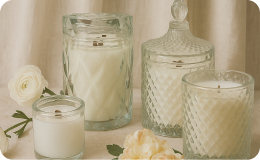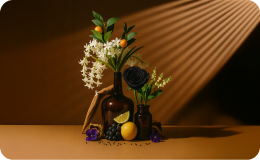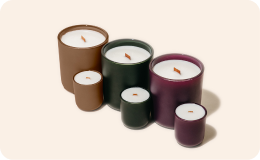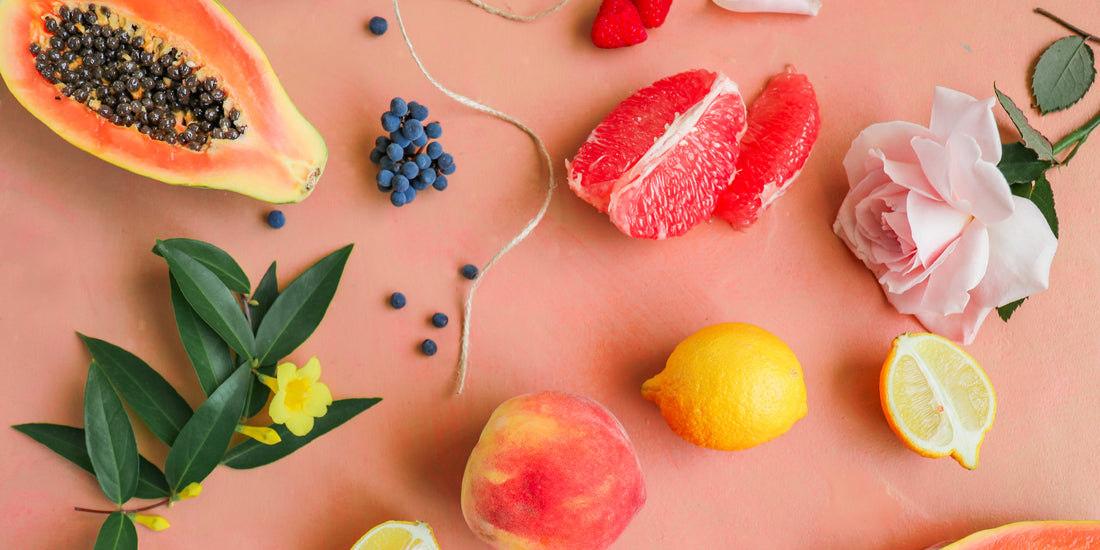Fragrance Notes, Explained
understanding the sensuous world of fragrance
Inspiring creativity, seduction, and emotion, fragrance entices the senses. With the limitless possibilities of a perfumer’s palette, each note embodies its own personality that can stimulate, arouse, or rekindle meaningful memories and feelings.
The creative world of fragrance begins by understanding what fragrance is out made from and how raw materials are combined to make the scents you know and love.
Read about candle fragrance basics.
the elements of fragrance
Essential oils, absolutes and man-made molecules make up between 2000 to 5000 unique ingredients on a perfumer's palette to create rare and complex fragrances.
Most fragrances are a unique composition of many ingredients. The notes of a fragrance range from the base that lingers the longest, the middle or heart notes, to the top notes that fade away the fastest but are most predominant when initially emitted into the room or on the skin.
-
Top notes typically include Aldehydes (Crisp, soapy, and floral citrusy scents), Citrus, Lite Fruity, Herbaceous and Ozone essences (clean, fresh, wet scents likened to fresh rainfall).
- Mid/heart notes make up the predominant character of the fragrance. They include Flowers, Fruits, Herbs, + Spices.
- Base notes are the long-lasting and can linger for days. These include Musks, Powders, Resins, Vanilla, Gourmand and Woody ingredients.
Explore makesy's top selling fragrances

The above image outlines the variety of different fragrance note categories available when creating or evaluating a fragrance.
the exploration of your fragrance
When choosing a fragrance or creating one to use for a project, it’s important to evaluate your fragrance based on fragrance notes you enjoyed and combined in a pleasing scent and what didn’t. Here are 7 simple steps to help you combine and choose the best fragrances for your desired vibe.
- Label the paper blotter strip with the name of the fragrance.
- Gently dip each corresponding blotter strip in the fragrance bottle to approximately ¼” on the strip.
- Bend the strip so the fragrance end is acing upright. Lay the dipped blotter strips out on a flat, dry surface and wait 30-60 seconds to allow your fragrances to settle before evaluating.
- Begin evaluating each fragrance. You can smell the inside of your forearm between each new scent to cleanse your olfactory palette.
- As each fragrance settles, you will be able to smell the top notes right away and then will begin to experience more and more of the mid and base notes as time passes.
- Take notes on what you liked or disliked about each fragrance and what each fragrance made you feel or think of.
Combine fragrances to create your own unique scent if desired.
make your own fragrance products
There are a variety of household and body care applications for fragrance usage. Here is a brief overview of the types of applications and the percentage of fragrance recommended for each type of product. Please refer to the IFRA document on each fragrance product page the for exact usage recommendations per fragrance:
- Candles: Combine with candle wax and add 8-12% fragrance.
- Diffusers: Combine with diffuser base oil and add 15-25% fragrance.
- Room Spray: Combine with room spray base and add 3-7% fragrance.
- Skin + Body Care: Combine with the specific skin + body care base and add 1-3% fragrance load.
- Eau de Parfum: Combine with alcohol and add fragrance at 15% - 30% fragrance.
- Eau de Toilette: Combine with alcohol and add fragrance at 5% - 15% fragrance.
- Eau de Cologne: Combine with alcohol and add fragrance at 2% - 5% fragrance.
Evaluating fragrances and understanding the elements available to create custom scents allows you to let your “scents” of creativity run wild. Fragrance is an exciting way to add emotion or depth of experience to your home and body creations.
Explore the sensuous world of fragrance with samples in our innovative fragrance discovery kits. All fragrances are cruelty-free, paraben-free, and phthalate-free.









